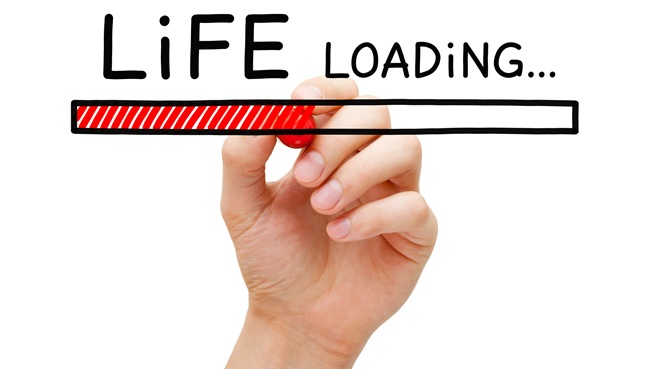Apr 03, 2025
Apr 03, 2025
How To Turn A ‘Midlife Shift’ Into A ‘Masterpiece’
Discover how the second act of life can unlock deeper purpose,
renewed passion, and authentic success
— beyond titles, timelines & expectations.
Is Midlife A Crisis or A Calling?
Have you ever woken up one day and questioned everything you once worked for? Have you found yourself staring at the ceiling, wondering why the things that once excited you now feel empty? Do you sometimes feel like you’re living on autopilot, chasing goals that no longer bring fulfillment?

If so, you’re not alone. This unsettling restlessness, often labeled as a midlife crisis, is actually something far deeper. It’s not a ‘breakdown’ — it’s a ‘breakthrough.’
Carl Jung, the legendary Swiss psychologist, once said: “Life really begins at forty. Up until then, you are just doing research.”
For years, society has conditioned us to believe that life peaks in our 20s and 30s, that success is defined by career milestones, financial achievements, and social validation. But what if that’s not true? What if midlife isn’t the beginning of the end, but the start of something far more profound?
The Two Halves of Life: A Shift in Purpose
Carl Jung believed that life unfolds in two distinct phases:
The First Half (Building the ‘Persona’)
The Second Half (Discovering the ‘Self’)
Instead of resisting this shift, embracing it can unlock the most meaningful years of your life.
Why Midlife Feels Like a Crisis
People often joke about midlife crises — men buying sports cars, quitting corporate jobs, or embarking on spiritual retreats. But Jung saw it as something sacred, a psychological turning point where we transition from external validation to internal wisdom.
This period can feel unsettling because:
But here’s the truth: this is not a crisis, it’s an invitation — a call to redefine success, shift priorities, and finally live life on your own terms.
Midlife ‘Awakening’: The Great ‘Reinvention’
History is filled with people who found their greatest purpose after 40:
These individuals didn’t peak in their youth — they came alive in midlife.
What changed? They stopped living by society’s expectations and started listening to their own inner calling.
How To Turn Midlife into a Renaissance
Instead of seeing midlife as an age of decline, embrace it as a period of reinvention. Here’s how:
1. Let Go of the Persona
The identity you spent decades crafting isn’t the real you. Strip away the expectations. Stop measuring yourself by job titles, bank balances, or social status.
Example: Steve Jobs, after being fired from Apple in his 30s, could have clung to his old identity. Instead, he embraced reinvention, started Pixar, and eventually returned to Apple stronger than ever.
2. Redefine Success
In your 20s and 30s, success meant achievement. In your 40s and beyond, success should mean fulfillment. Ask yourself:
Example: Oprah Winfrey, after decades in television, shifted her focus toward spirituality, meaning, and purpose-driven work in her 50s.
3. Reconnect with Forgotten Passions
As children, we loved art, music, storytelling, or adventure — but we abandoned them for careers. Now is the time to return.
Example: Harland Sanders (Colonel Sanders) always loved cooking. At 65, after decades of failures, he started KFC — because passion has no expiry date.
4. Embrace Change Instead of Fearing It
The biggest mistake we make is clinging to the past. Instead of resisting change, flow with it.
Example: Nelson Mandela spent 27 years in prison but used that time for deep self-reflection. When he emerged at 71, he didn’t dwell on lost years — he led South Africa into a new era.
5. Focus on Meaning Over Materialism
True fulfillment doesn’t come from cars, houses, or promotions — it comes from connection, contribution, and purpose.
Example: Mahatma Gandhi was a lawyer chasing success in his 30s. But in his 40s, he found a higher purpose: liberating India. His true legacy began after midlife.
6. Accept That It’s Never Too Late
There’s no deadline for reinvention. Whether you’re 40, 50, or 60, life is still unfolding. The best chapters may still be ahead.
Example: Vera Wang was a figure skater in her youth but didn’t enter the fashion industry until 40. Today, she’s one of the world’s most celebrated designers.
The ‘Afternoon of Life’: Your ‘Greatest Chapter’ Yet
Jung beautifully described this transition as the afternoon of life: “We cannot live the afternoon of life according to the program of life's morning.”
The rules that worked in your youth won’t serve you in midlife. In your 20s, you sought ambition. In your 30s, you chased success. In your 40s, you seek wisdom. In your 50s, you chase meaning.
This isn’t the end. It’s the beginning of something far greater. Remember, life doesn’t slow down after 40 — it deepens, awakens, and finally becomes your own.
Your Invitation to The Greatest Chapter of Your Life
If you’re approaching 40 — or have already crossed it — ask yourself:
Midlife is not a crisis. It’s a rebirth. It’s not a period of decline but of depth. It’s when you stop pretending to be someone else and finally become yourself.
And the best part?
No matter how old you are — 40, 50, or even 60 — it’s never too late to start.
Because maybe, just maybe, everything up until now was just preparation for the life you were truly meant to live.
Image (c) istock.com
29-Mar-2025
More by : P. Mohan Chandran